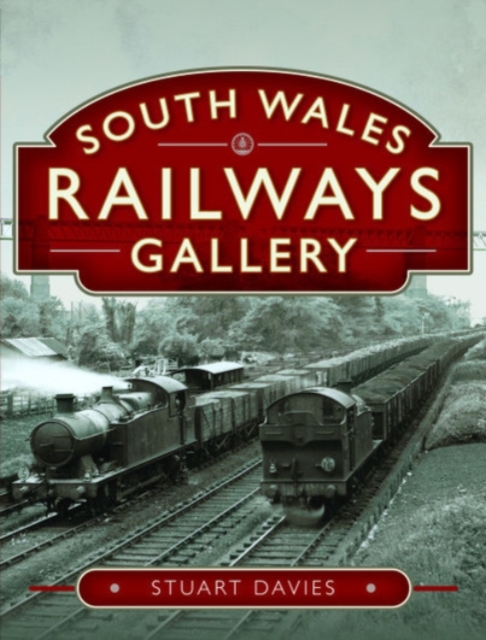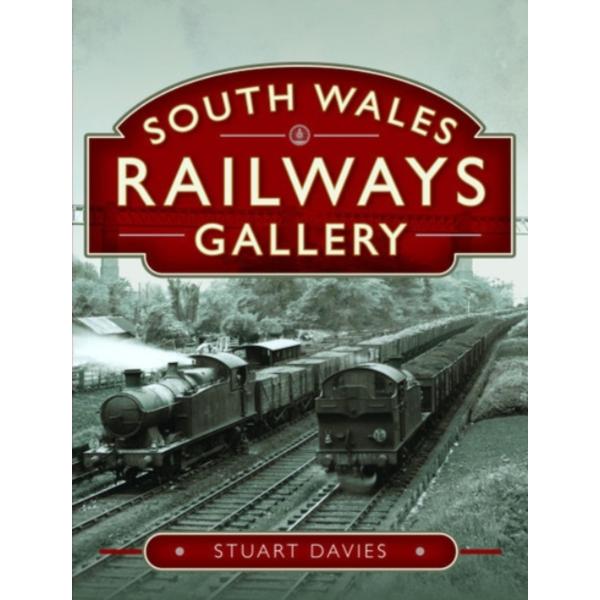South Wales Railways Gallery
South Wales Railways Gallery
At its peak, the South Wales railway network was one of the most complex in the world. Its primary purpose was to transport Coal from source to point of consumption or export via the various docks. To this was added the other raw materials necessary for making Iron and ultimately Steel, together with the respective products of that industry.
True, there was no glory in this day to day phenomenon and as a consequence, the area has been poorly represented in the annals of the British railway network. Even that paragon of railway publicity the Great Western, found easier plums to pick elsewhere on its system. However, in addition to the GW, the area was a magnet for the London & North Western, the Midland Railway and not to be forgotten, the 15 indigenous companies.
Yet, in terms of traffic, engineering enterprise, operating practices and locomotive types, the area boasted an unequaled variety which this book attempts to reflect. Many of the photographs have not been published before and capture an essence of the variety to be found. The captions contain extensive details to supplement the photographic record enabling a more comprehensive appreciation and understanding of what was involved.
It is difficult to appreciate the railway was once a "Common Carrier" obliged to convey any consignment offered. Even though Coal was predominant other traffic, including the more unusual, are also featured; Although of secondary importance in regard to revenue, Passenger services were carefully dovetailed into the intensive freight operation and matched any other location's provision.
After the 1923 Grouping, the GW became the major player in South Wales. It absorbed all 15 of the independent companies and further extended its policy of standardization. Nevertheless, where the smaller companies demonstrated good practices, these were embraced. The L&NW and MR elements became LMSR but still remained far flung tentacles from the parent. All this is recognized here albeit in proportion.
The Gallery aims to provide a flavor of what the railways of South Wales had to offer and enlighten the reader as to its major part in the national network.
PRP: 216.00 Lei
Acesta este Prețul Recomandat de Producător. Prețul de vânzare al produsului este afișat mai jos.
194.40Lei
194.40Lei
216.00 LeiLivrare in 2-4 saptamani
Descrierea produsului
At its peak, the South Wales railway network was one of the most complex in the world. Its primary purpose was to transport Coal from source to point of consumption or export via the various docks. To this was added the other raw materials necessary for making Iron and ultimately Steel, together with the respective products of that industry.
True, there was no glory in this day to day phenomenon and as a consequence, the area has been poorly represented in the annals of the British railway network. Even that paragon of railway publicity the Great Western, found easier plums to pick elsewhere on its system. However, in addition to the GW, the area was a magnet for the London & North Western, the Midland Railway and not to be forgotten, the 15 indigenous companies.
Yet, in terms of traffic, engineering enterprise, operating practices and locomotive types, the area boasted an unequaled variety which this book attempts to reflect. Many of the photographs have not been published before and capture an essence of the variety to be found. The captions contain extensive details to supplement the photographic record enabling a more comprehensive appreciation and understanding of what was involved.
It is difficult to appreciate the railway was once a "Common Carrier" obliged to convey any consignment offered. Even though Coal was predominant other traffic, including the more unusual, are also featured; Although of secondary importance in regard to revenue, Passenger services were carefully dovetailed into the intensive freight operation and matched any other location's provision.
After the 1923 Grouping, the GW became the major player in South Wales. It absorbed all 15 of the independent companies and further extended its policy of standardization. Nevertheless, where the smaller companies demonstrated good practices, these were embraced. The L&NW and MR elements became LMSR but still remained far flung tentacles from the parent. All this is recognized here albeit in proportion.
The Gallery aims to provide a flavor of what the railways of South Wales had to offer and enlighten the reader as to its major part in the national network.
Detaliile produsului














